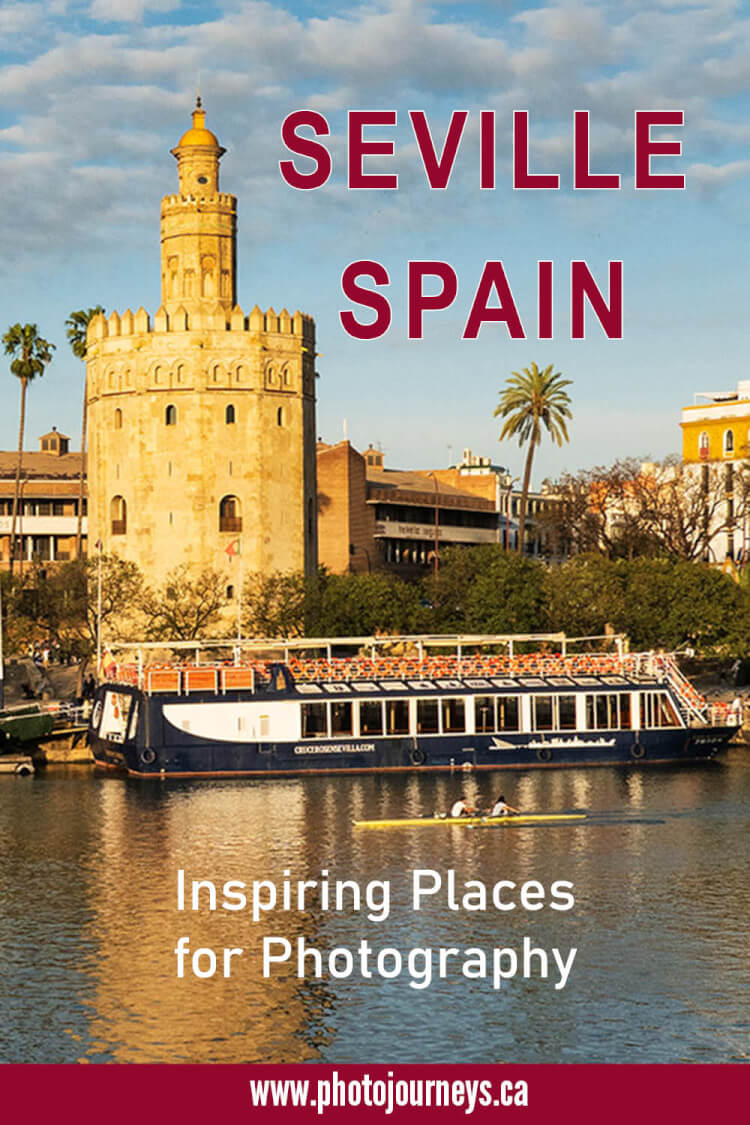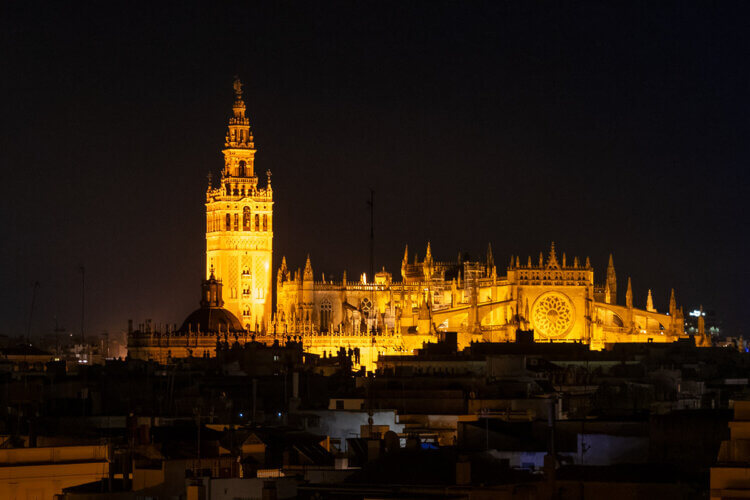
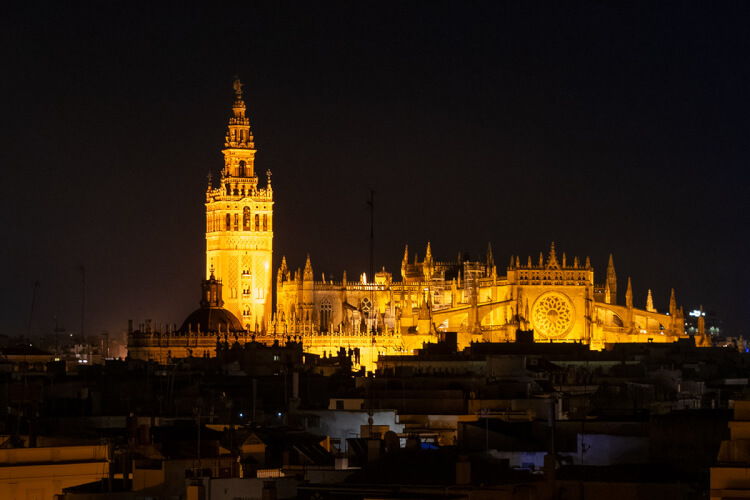
Seville ranks among Spain’s most celebrated cities and it’s easy to see why. It’s the cultural and artistic capital of Andalucia that includes much of southern Spain. Situated along the Guadalquivir River, the city is chock-a-block with historic buildings, churches, UNESCO World Heritage Sites, thousands of orange trees, parks, and eateries galore. What struck us most about our recent visit was that there seemed to be one photogenic view after another. We’ll get into some specific places in future posts but we want to start with a photographic overview of what impressed us the most.
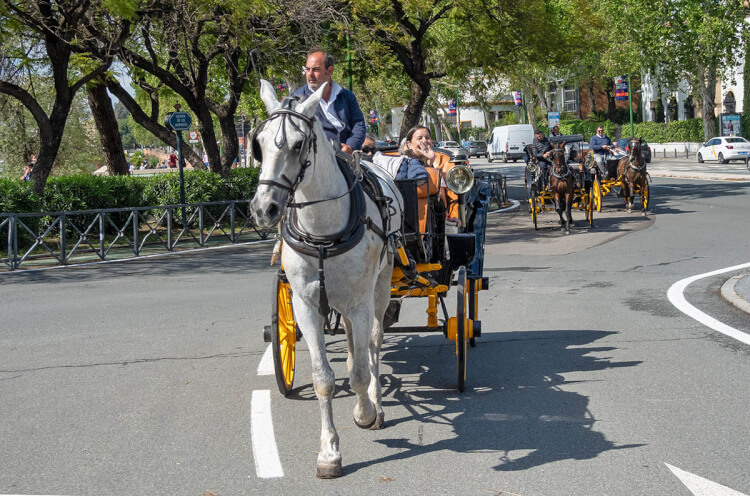
Cathedral of Seville
The Cathedral of Seville is practically a destination on its own. Designated a UNESCO World Heritage Site, the massive building is the largest Gothic cathedral in the world and the world’s third-largest church of any kind. Built between 1403 and 1506, it is so immense that you can’t see it all from one vantage point. The cathedral was constructed on the site of a 12th-century mosque and incorporates some architectural elements from that era such as the Giralda or bell tower, which has similarities to a mosque’s minaret.
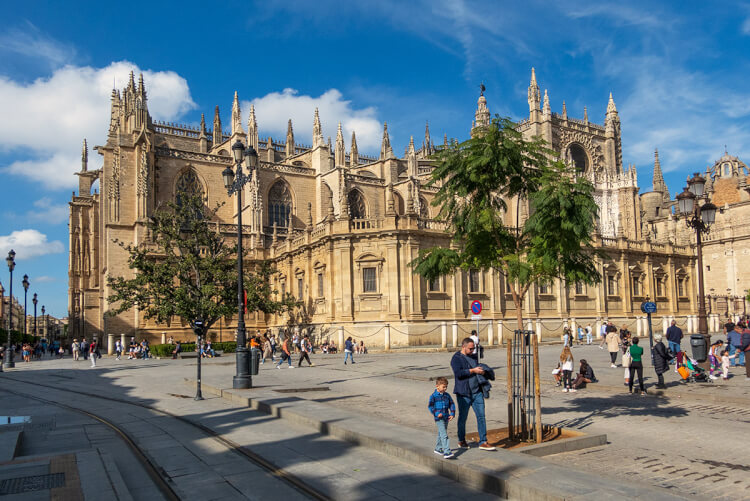
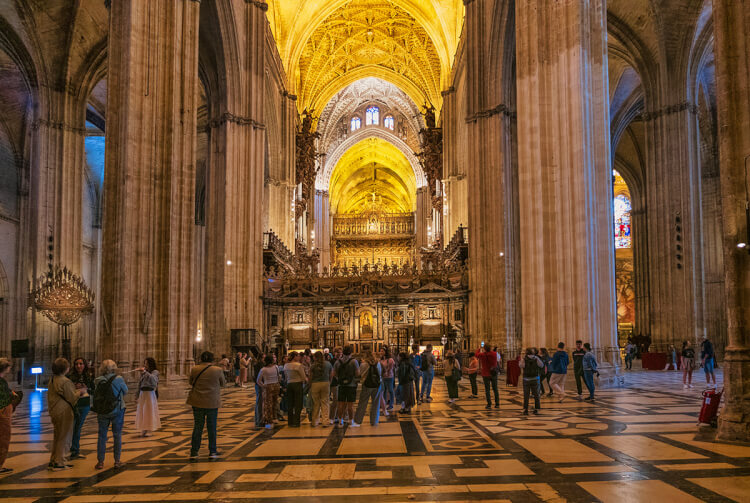
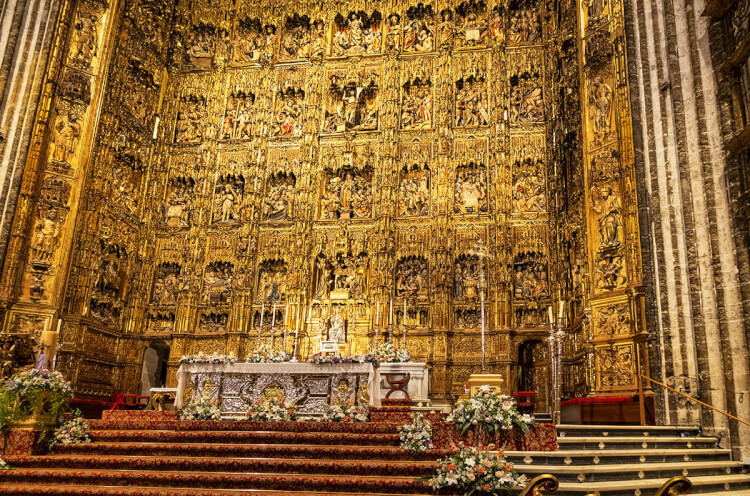
Real Alcazar
The Real Alcazar (Royal Palace) is also a UNESCO World Heritage Site. This castle-like masterpiece was first built by the Islamic rulers that dominated much of southern Spain for many years, then was enhanced by the Catholic monarchs that took over in the 1200s. It’s considered one of the best examples of Mudejar architecture which melds Islamic, Christian, and Jewish elements. When Seville was captured by Christians in 1248 as part of the Reconquista, the new rulers made the Alcazar their residence. Even today, Spain’s royal family has private apartments in the Alcazar where they stay when visiting Seville.
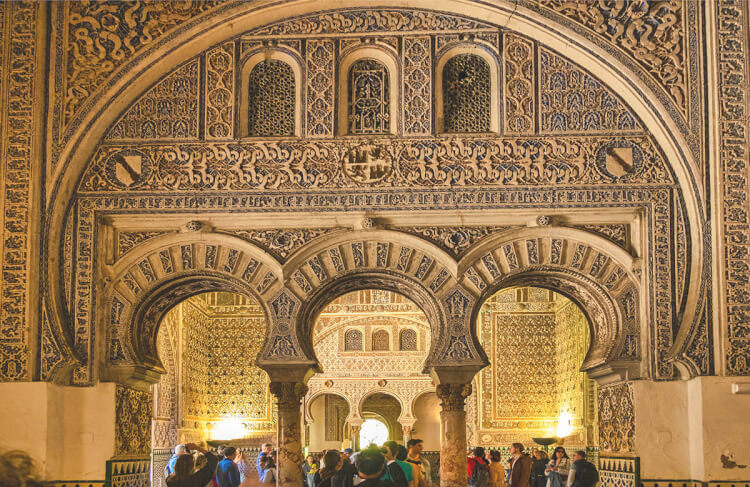
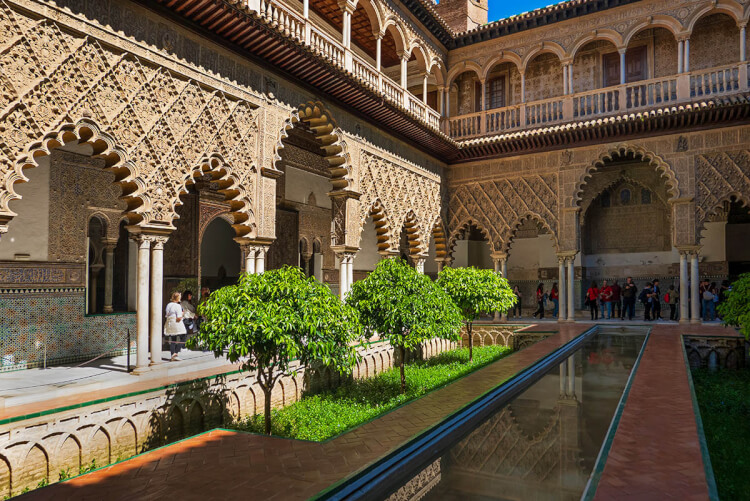
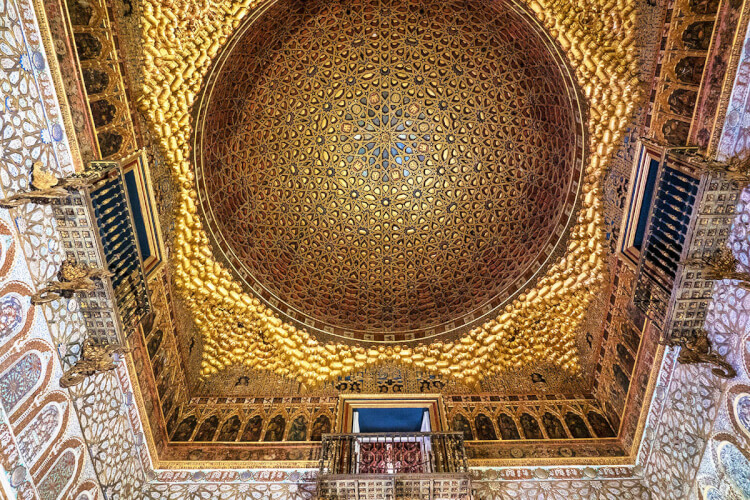
Plaza de España
The Plaza de España is the most famous square in Seville. From a photographer’s point of view, we would rank this as the top place in the city. It was built in 1929 for the Ibero-American Exhibition. To provide some context, Trip Advisor readers have rated it The Most Spectacular Monument in Europe. Alcoves represent every province in Spain, along with wildly colourful tiles galore, towers, bridges over water, arcaded galleries, and a huge fountain. Not surprisingly, the location has been used for many movie sets, including Lawrence of Arabia and Star Wars. On the weekends, we saw long lines of people waiting their turn to take a rowboat ride along the waterway through the complex.
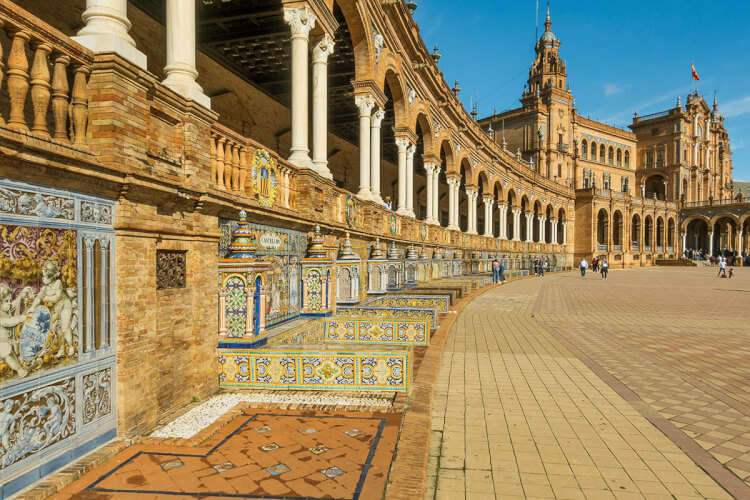

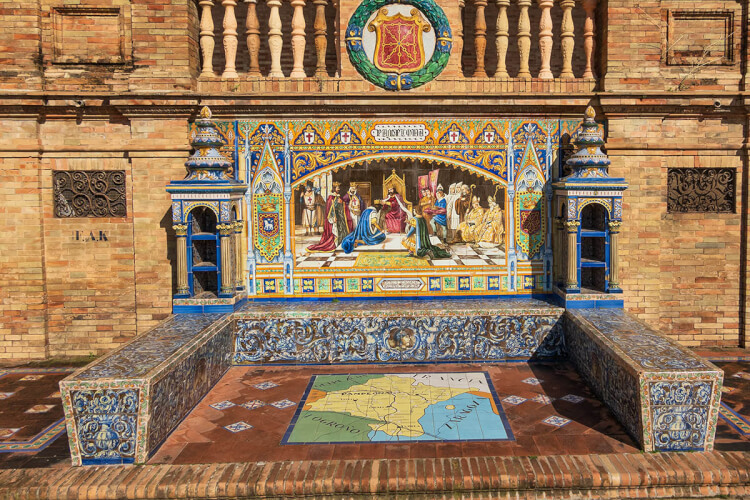
The Mushroom
While historic architecture dominates Seville, a more modern piece of art deserves a look as well. The Metropol Parasol is a huge, stylized mushroom-shaped roof in the central Plaza de la Encarnación, considered among the largest wooden structure in the world. The open-air plaza underneath always seems to be full of people, and the venue also houses a market, shops, and cafes.
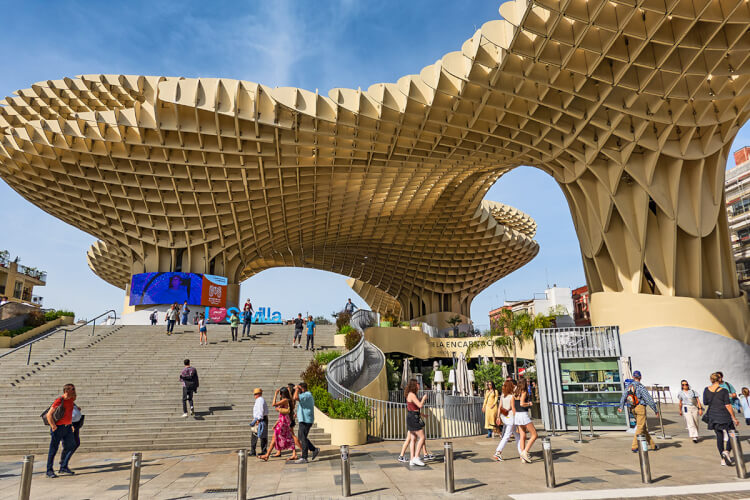
Flamenco
Seville and flamenco go hand in hand, with the city believed to be the birthplace of flamenco. More than simply music and dance, flamenco is a passionate art form engrained into the soul of southern Spain. It is so significant that UNESCO declared flamenco an Intangible Cultural Heritage of Humanity. You can attend organized flamenco shows, and even find flamenco in informal street performances.
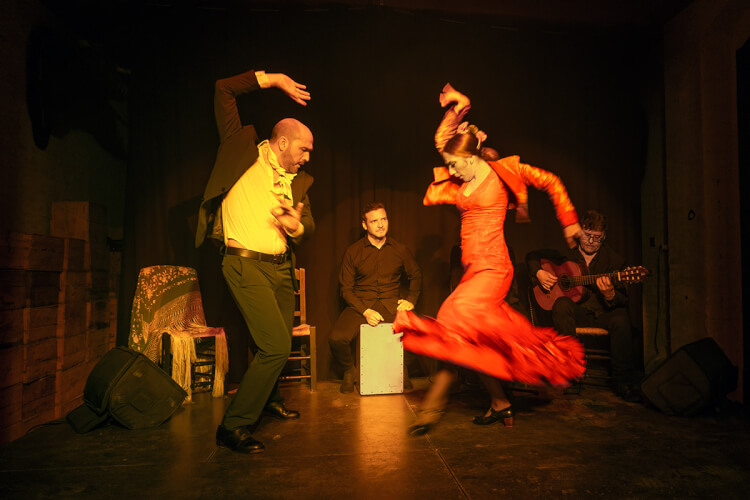
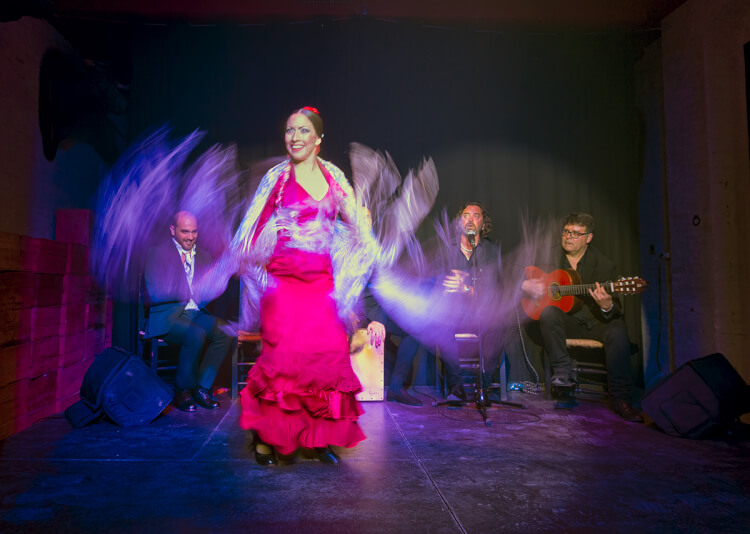
Guadalquivir River
The Guadalquivir River dominates the Seville landscape and history. It was from here that Magellan set sail for the first round the world trip in 1519, and for years this was the main maritime route for Atlantic traffic. The Torre del Oro, or Gold Tower on the river is one of Seville’s iconic monuments. Built in the 13th century, and part of the city walls, it was used to deter attacks on the city.
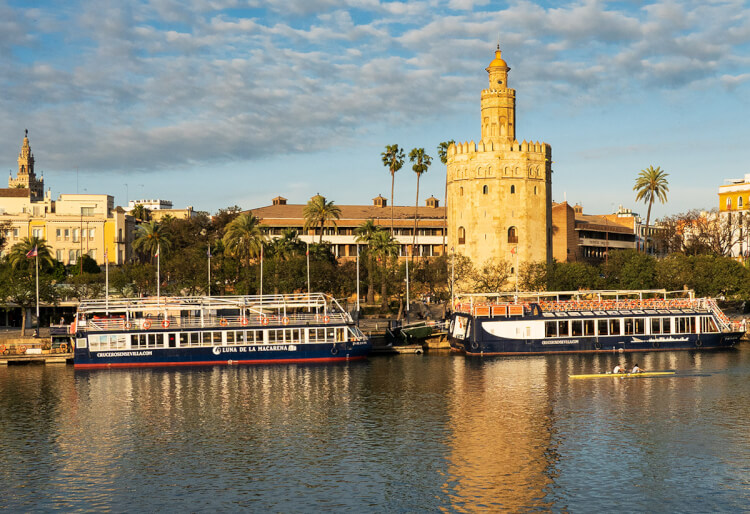
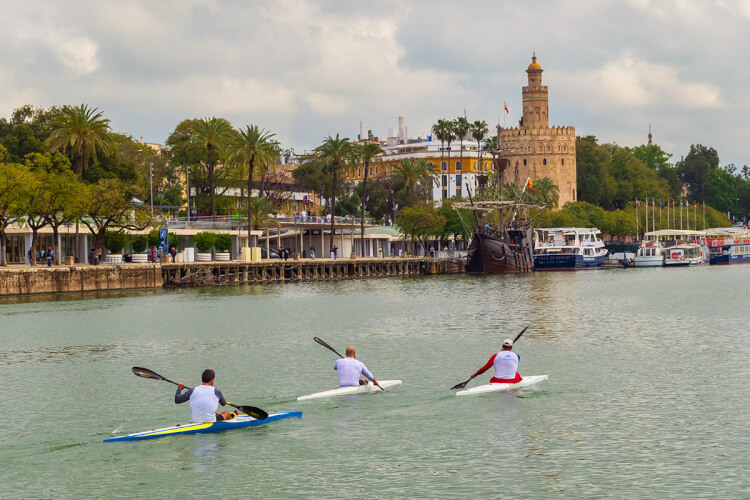
In addition to famous attractions, part of the joy of visiting Seville comes from just wandering the streets, taking in its sights, and soaking up its vibrant atmosphere.

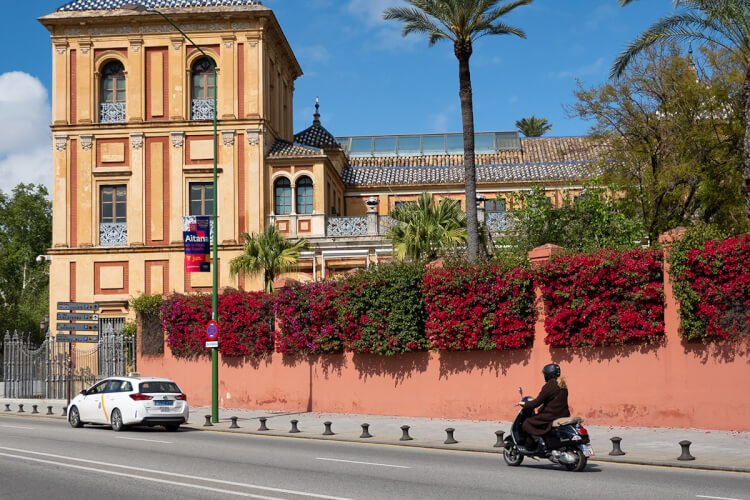
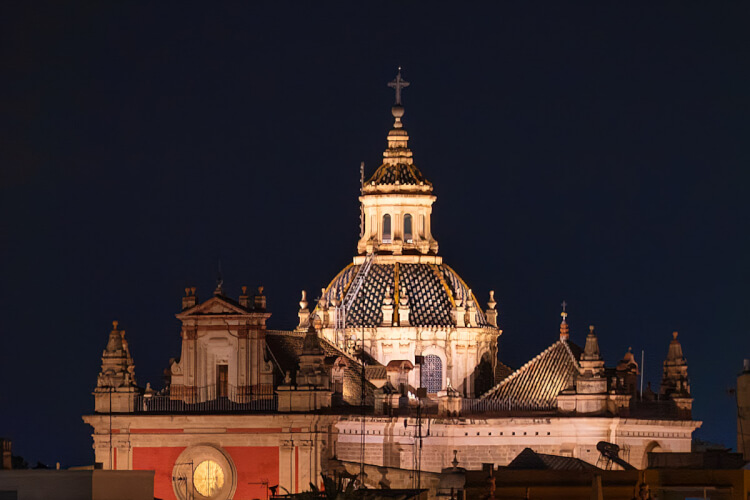
Resources
- The extensive tourism website for Seville comes packed with ideas on places to explore, tours, day trips, flamenco, typical food, and much more.
- If you’re keen to explore more of the Andalucia area, Andalucia Tourism has plenty of suggestions.
- Tourism Office of Spain website is the place to go for travel information throughout the country.
SUBSCRIBE to Photojourneys below
Feel free to PIN this article on Seville, Spain for later
